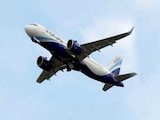The North Atlantic Treaty Organization (NATO) has announced an increase in its defence spending target, with member countries now expected to allocate 5 per cent of their GDP to defence by 2035.
The agreement, reached at a summit in the Netherlands on Wednesday, is nearly double the alliance's long-standing 2 per cent benchmark and comes amid renewed pressure from US President Donald Trump for allies to boost their military contributions, The Washington Post reported.
NATO is a military alliance of 32 member countries across North America and Europe. They include the United States, Canada, the United Kingdom, France, Germany, Italy, Turkey, and most European Union nations.
How Much Do NATO Countries Currently Spend On Defence?
As of 2024, NATO countries spent an average of 2.61 per cent of their gross domestic product (GDP) on defence. But this average masks wide disparities in individual national contributions.
According to NATO's estimates:
- Poland spent the highest proportion of its GDP on defence, over 4 per cent, making it the only country to exceed that threshold.
- Estonia and Latvia each spent about 3.4 per cent.
- The US, with the largest GDP among NATO members, spent approximately 3.2 per cent.
- Spain spent 1.2 per cent of its GDP on defence, the smallest share in the alliance.
- Canada, Portugal, and Italy each spent around 1.5 per cent.
- Slovenia, Belgium, and Luxembourg fell slightly below those levels.
Who Met The 2% Target?
At least 22 of NATO's 32 members met or exceeded the original 2 per cent spending target set in 2014. The remaining nine countries did not. Iceland is excluded from these estimates, as it does not maintain a standing military.
This target, while influential, has never been legally binding. Even so, average defence spending among NATO members has risen significantly, from 1.4 per cent of GDP in 2014 to over 2 per cent in 2024.
A New 5% Benchmark
While the new 5 per cent goal is intended to signal stronger collective defence, its implementation is far from guaranteed.
At the summit, Donald Trump singled out Spain, accusing it of "wanting a free ride" and threatening to penalise the country in future trade negotiations if it did not increase its defence budget. In response, Spanish Prime Minister Pedro Sanchez said Spain had no plans to meet the 5 per cent goal. He called the previous 2 per cent target "sufficient" and "realistic" for Spain's economy.
Rachel Rizzo, a senior fellow at the Atlantic Council's Europe Center, said that the wording of the agreement may offer flexibility. "The language of the 5 per cent agreement may leave just enough wiggle room for some allies, such as Spain, to opt-out," she said as per CBS News.
What Counts As NATO's Defence Spending?
NATO calculates defence spending to include weapons and equipment, personnel costs, operational readiness, infrastructure, and other military capabilities.















